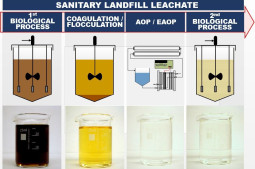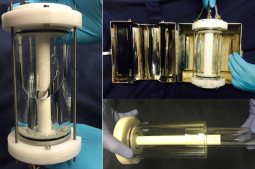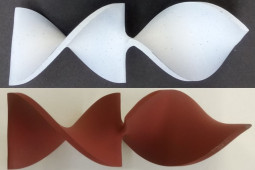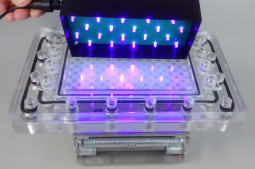Process Integration & Intensification
Light induced AOPs/EAOPs are attractive technologies with potential application in the area of water, wastewater and air treatment. However, industrial application remains limited due to high costs, scale up problems and lack of innovative photoreactors designs. Research has been focused on the integration of AOPs/EAOPs with other processes such as biological oxidation, coagulation/flocculation, adsorption and membrane processes to reduce substantially the costs associated with the AOPs/EAOPs step. Furthermore, the intensification of heterogeneous photocatalysis has been developed through the coupling of physical, chemical and electrochemical processes such as adsorption (nano-enhanced sorbents) and membranes (nano-enhanced membranes), and also by means of the elimination of photon and mass transfer limitations. Once the catalyst is activated by incident light, the photocatalytic degradation of pollutants can be divided in five processes: (1) mass transport of pollutant/reactant (O2 and H2O) from the bulk air to the surface of catalyst, (2) adsorption of the pollutant/reactant (O2 and H2O) at the catalyst surface, (3) reaction in the catalyst surface, (4) desorption of the by-products from the surface of catalyst renewing the photocatalytic sites, and (5) mass transport of the by-products from the surface of catalyst to bulk air/solution. The design of the photocatalytic reactor plays an important role in its photocatalytic performance, being possible to intensify the illumination efficiency and the contact between activated catalysts and reagents/pollutants. Monolithic photoreactor provides a high catalyst surface to volume ratio, favoring the contact between pollutants/reactants and the catalyst. The major disadvantage is the low light efficiency due to the high decrease on light intensity along the channels length. On the other hand, microreactors have been recently investigated to promote efficiently photochemical and photocatalytic reactions due to the high illuminated catalyst surface per unit of reaction volume inside the reactor, leading to an efficient catalytic expose to radiation. Beyond that, due to the small size of the channels, the microreactors presents short molecular diffusion distances and large specific interfacial areas, maximizing the pollutant/reactants/catalyst contact and allowing an uniform irradiance on the entire catalyst surface and through the entire reactor depth. LSRE developed a new mixing device, called as NETmix reactor, consisting in a network of static mixing chambers interconnected by transport channels. The network can either be constructed from cylindrical chambers and rectangular cross section area micro-channels (2D unit cell) or from spherical chambers and cylindrical channels (3D unit cell). This micro-meso-reactor allows the easy implementation of different premixing reactants injection schemes, the ability to control the mean residence time of the reactants and the mixing intensity and scale.




B.M.C. Filho, A.L.P. Araujo, G.V. Silva, R.A.R. Boaventura, M.M. Dias, J.C.B. Lopes, V.J.P. Vilar. Intensification of heterogeneous TiO2 photocatalysis using an innovative micro-meso-structured-photoreactor for n-decane oxidation at gas phase. Chemical Engineering Journal, 310, 331-341, 2017
B.A. Marinho, R.O. Cristóvão, R. Djellabi, J.M. Loureiro, R.A.R. Boaventura, V.J.P. Vilar. Photocatalytic reduction of Cr(VI) over TiO2-coated cellulose acetate monolithic structures using solar light. Applied Catalysis B: Environmental, 203, 18-30, 2017
T.F.C.V. Silva, P.A. Soares, D.R. Manenti, A. Fonseca, I. Saraiva, R.A.R. Boaventura, V.J.P. Vilar. An innovative multistage treatment system for sanitary landfill leachate depuration: Studies at pilot-scale. Science of the Total Environment, 576, 99-117, 2017
F.C. Moreira, J. Soler, A. Fonseca, I. Saraiva, R.A.R. Boaventura, E. Brillas, V.J.P. Vilar. Incorporation of electrochemical advanced oxidation processes in a multistage treatment system for sanitary landfill leachate. Water Research, 81, 375-387, 2015
T.F.C.V. Silva, M.E.F. Silva, A.C. Cunha-Queda, A. Fonseca, I. Saraiva, M.A. Sousa, C. Gonçalves, M.F. Alpendurada, R.A.R. Boaventura, V.J.P. Vilar. Multistage treatment system for raw leachate fromsanitary landfill combining biological nitrification-denitrification/solar photoFenton/biological processes, at a scale close to industrial - Biodegradability enhancement and evolution profile of trace poll. Water Research, 47, 6167-6186, 2013




